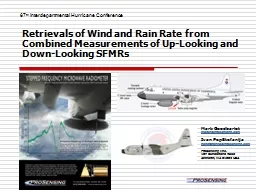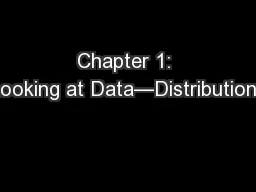PPT-Chapter 1: Looking at Data —
Author : kittie-lecroy | Published Date : 2018-09-21
Distributions Lecture Presentation Slides Macmillan Learning 2017 Chapter 1 Looking at Data Distributions Introduction 11 Data 12 Displaying Distributions with
Presentation Embed Code
Download Presentation
Download Presentation The PPT/PDF document "Chapter 1: Looking at Data —" is the property of its rightful owner. Permission is granted to download and print the materials on this website for personal, non-commercial use only, and to display it on your personal computer provided you do not modify the materials and that you retain all copyright notices contained in the materials. By downloading content from our website, you accept the terms of this agreement.
Chapter 1: Looking at Data —: Transcript
Download Rules Of Document
"Chapter 1: Looking at Data —"The content belongs to its owner. You may download and print it for personal use, without modification, and keep all copyright notices. By downloading, you agree to these terms.
Related Documents














